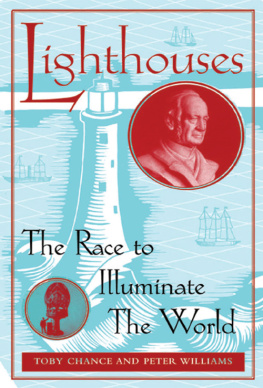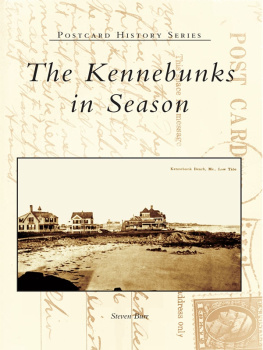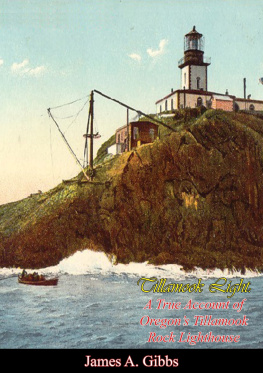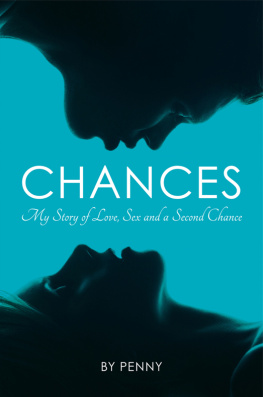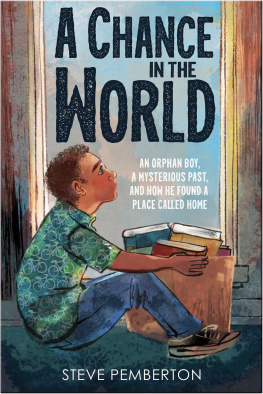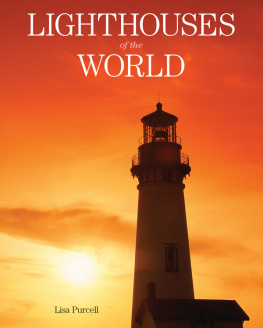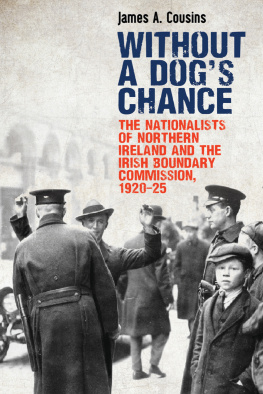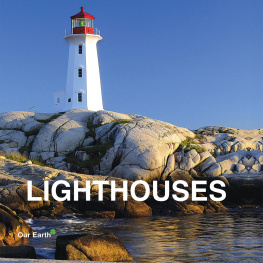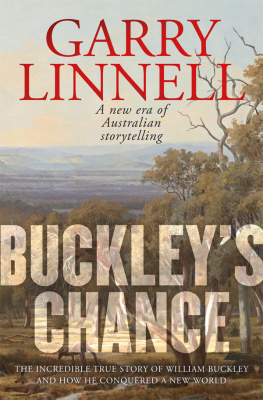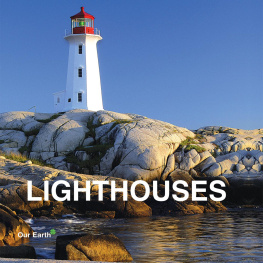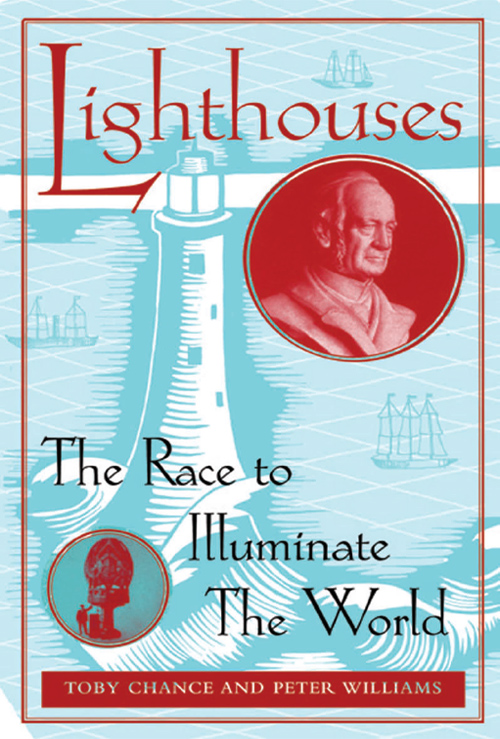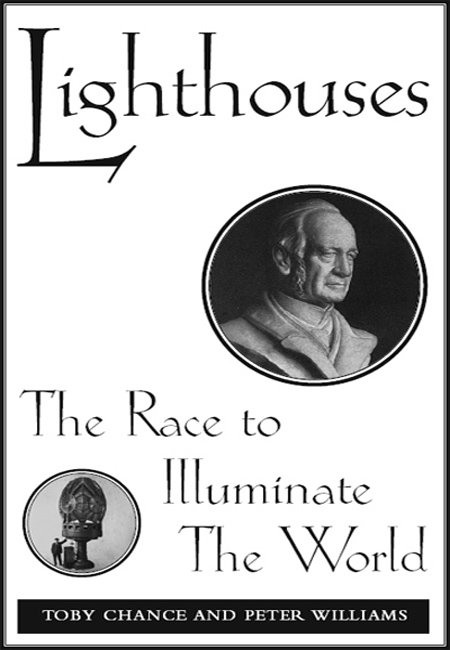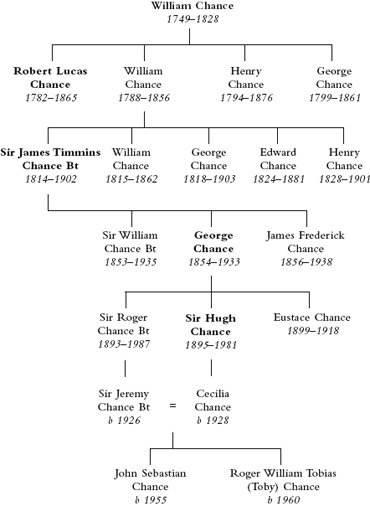Toby Chance is James Chances great-great-grandson and the grandson of Sir Hugh Chance, the last Chairman of an independent Chance Brothers. Born in England, he lives in Johannesburg, South Africa, and runs an event managementcompany specializing in small business development and adventure tourism.
Peter Williams is the author of the best-selling book Beacon on the Rock (2001). He has served at sea and was the founder of the lighthouse enthusiast magazine Leading Lights, which he continues to work on as consultant editor. Peter maintains his interest in lighthouses as the Administration Officer of the World Lighthouse Society (www.worldlighthouses.org).
This edition published in 2011
Printed edition first published in 2008 by New Holland Publishers (UK) Ltd
London Cape Town Sydney Auckland
www.newhollandpublishers.com
Garfield House
8688 Edgware Road
London W2 2EA, UK
80 McKenzie Street, Cape Town 8001, South Africa
Unit 1, 66 Gibbes Street, Chatswood, NSW 2067, Australia
218 Lake Road, Northcote, Auckland, New Zealand
Text copyright 2011 Toby Chance and Peter Williams
Illustration copyright 2011 New Holland Publishers (UK) Ltd
Copyright 2011 New Holland Publishers (UK) Ltd
The authors have asserted their moral right to be identified as the authors of this book.
All rights reserved. No part of this publication may be reproduced, stored in a retrieval system or transmitted, in any form or by any means, electronic, mechanical, photocopying, recording or otherwise, without the prior written permission of the publishers and copyright holders.
ISBN: 978-1-84773-174-6 [print]
ISBN: 978-1-78009-104-4 [ePub]
ISBN: 978-1-78009-105-1 [Pdf]
Publisher: Aruna Vasudevan
Senior Editor: Kate Parker
Design and cover design: Studio Ink
Cover illustration: Kate Sutton
Illustrations: William Smuts
Production: Melanie Dowland
Note: The author and publishers have made every effort to ensure that the information given in this book is safe and accurate, but they cannot accept liability for any resulting injury or loss or damage to either property or person, whether direct or consequential and howsoever arising.
Cover: bust of James Chance; Manora Point hyper-radial lens, built by Chance Brothers in 1908.
CONTENTS
Illustrations
FIGURES
The Chance Family Tree
Names in bold denote Senior Partners or Chairmen of Chance Brothers James Timmins Chance is referred to as James Chance throughout
Key Characters
Below are listed some of the principal characters mentioned in this book who played a part in lighthouse illumination from the 1740s onwards:
Airy, Sir George: natural philosopher and mathematician, British Astronomer Royal, advisor to the Royal Commission on Lighthouses 185861.
Arago, Francois: French Astronomer Royal, Member of the French Lighthouse Commission who invited Augustin Fresnel to investigate the state of lighthouse illumination in France.
Argand, Ami: Swiss engineer, inventor of the oil lamp in 1784 that bears his name.
Barbier, Frdric: French lighthouse engineer, founded Barbier et Fenestre in 1862, Barbier et Bnard in 1894 and Barbier, Bnard et Turenne (BBT) in 1901.
Bontemps, George: French glass maker, joined Chance Brothers in 1848 to take charge of optical glass manufacture.
Brewster, Sir David: Scottish optical scientist and long term promoter of the use of dioptric lenses in British lighthouses, after 1844 encouraged Chance Brothers to enter the lighthouse business.
Chance, Sir James: Optical scientist, engineer, businessman and philanthropist, inventor of the Patent Plate glass used to glaze the Crystal Palace in 1851, exhibited Chance Brothers first lighthouse lens at the 1851 Great Exhibition, senior partner at Chance Brothers from 1860 to 1889, created a baronet by Queen Victoria in 1901.
Chance, Robert Lucas: uncle of James Chance, founded the Chance Brothers glass dynasty, leader of the British glass trade from the 1830s to his retirement in 1860.
Cookson, Isaac: English glassmaker and head of the firm of Cooksons, which built Englands first dioptric lenses for lighthouses from 1831 to 1845.
Daln, Gustaf: Swedish physicist and engineer, Chief Engineer at the AGA company in 1906, invented the Daln acetylene light, sun valve and lamp changer, ushering in the age of automated lighthouse illumination, awarded the 1912 Nobel Prize for Physics, invented the AGA cooker.
De Buffon, Count: French mathematician and optical scientist, in 1748 described for the first time a lens cut from a single piece of glass, which was later adapted by Brewster and Fresnel for lighthouse illumination.
Douglass, Sir James: British lighthouse engineer, Chief Engineer at Trinity House, designed and built the fifth and present Eddystone Lighthouse in 1882, for which he was knighted by Queen Victoria.
Faraday, Michael: English experimental chemist, Fellow of the Royal Society and Royal Institution, appointed Scientific Adviser to Trinity House in 1835, advised the 1858-61 Royal Commission on Lighthouses on optics.
Fenestre, Stanilas: French lighthouse engineer, formed Barbier et Frenestre in 1862 with Frdric Barbier.
Fresnel, Augustin: French mathematician and optical scientist, brother of Lonor and Fulgence, inventor of the dioptric lighthouse lens in 1822, after whom the Fresnel lens has forever been known.
Henry, Augustin: French clockmaker who turned to lighthouse lens manufacture in 1822, forming a partnership with the Paute family to create Henry Lepaute, which became Frances leading lens builder from the 1830s to the 1860s.
Hopkinson, Dr John: English mathematician and electrical engineer, succeeded James Chance as head of the Chance Brothers lighthouse works in 1872, inventor of the Group Flashing Light system for distinguishing between lighthouses.
Lemonnier, Paul: French civil turned lighthouse engineer, formed Sauter Lemonnier et Cie in 1870 with Louis Sautter.
Ltourneau, Louis: French lighthouse engineer, supplied lenses to Messrs Wilkins for their exhibition of lighthouses at the 1851 Great Exhibition.
Lewis, Winslow: American lighthouse engineer and entrepreneur, supplied most of the US lighthouse illumination equipment from the 1820s to 1850s with the assistance of Stephen Pleasanton, head of the US lighthouse service.
Norberg, Jonas: Swedish lighthouse engineer, inventor of first true parabolic reflector for lighthouse illumination in 1757 and later the first revolving lighthouse apparatus.
Pintsch, Julius: German inventor of a gas system of lighthouse illumination in 1851, which evolved to become a standard item in lighthouses.
Sautter, Louis: lighthouse engineer, bought Ltourneaus lighthouse business in 1852, renaming it the Sautter Works.
Soleil, Snr, Francois: French glass maker, built Augustin Fresnels first dioptric lens in 1821.
Stevenson, Robert:

